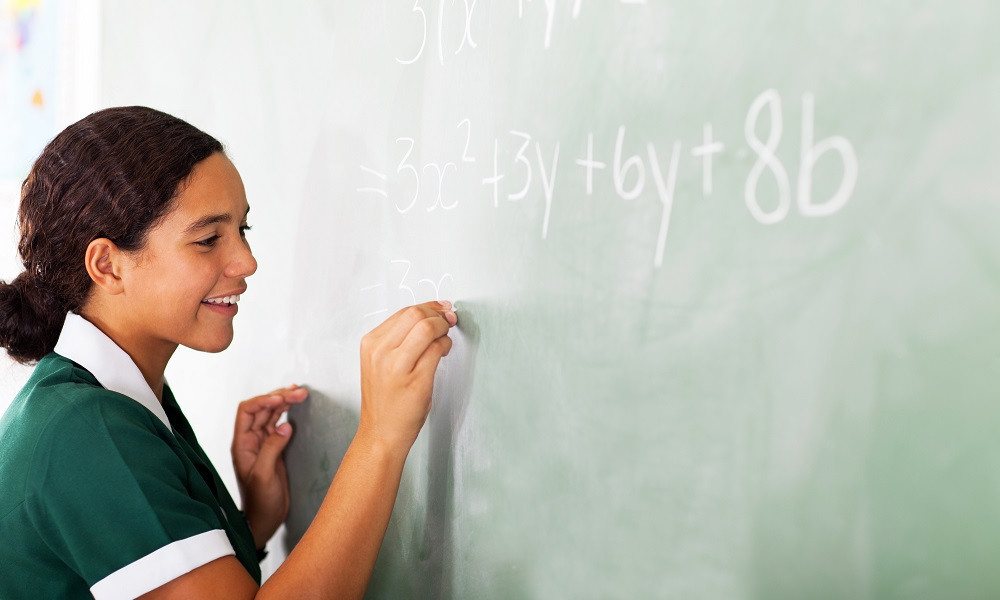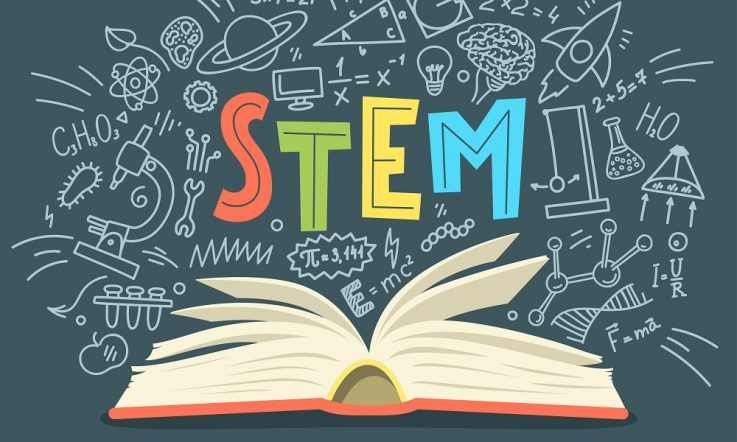This podcast from Teacher is supported by James Cook University. Study Psychology for the future and better understand your students and peers with JCU's 100% online Graduate Diploma of Psychology.
Thanks for downloading this episode of Teacher Staffroom, where we catch you up on the latest evidence, insight and action. I'm Dominique Russell.
As Global Teacher Prize finalist Sarah Mathews once said, ‘numeracy is everyone's business.' In this episode, I'd like to dive into the stories of educators around Australia who are being so innovative in the way they engage students in mathematics. We'll take you to a mathematics-based action research project, an exciting new video series, and research indicating student thinking behind their subject selection in senior secondary school. All of that, as well as a quick wrap up of some of the other content you might have missed from us recently.
I'll be posing some questions throughout, so it's a great opportunity to sit down with your colleagues to discuss how these stories could be relevant or helpful to your school context. That's this episode of Teacher Staffroom. Let's jump in.
My favourite piece of content recently has definitely been our first videos with Mathematics teacher Holly Millican. She started her video series with us on ‘Making Maths fun' by sharing a bunch of ideas on how to make revision fun for students.
The three activities she shared can be used with students in a range of year levels. The first is called ‘Revision Jenga', the second is a QR code-based activity called Plickers, and the third is a murder mystery activity called ‘Whodunnit'. She summed up the impact of these approaches really well, when she said this:
But I know personally for me when I was a high school student, there is not one chapter review that I remember doing. There's not one chapter review that I was like ‘Oh my God, this is exciting!' Never. They're not exciting. They're 40 questions that, yes, absolutely review the content and that's what we want. But let's try and use them in a different way, a way that gets the kids excited, a way that gets them to go ‘hey, I remember that'…
In her second video, she spoke about some useful techniques to engage students in mathematics. Importantly, she began this video by identifying the three types of disengaged students she sees in her own classroom.
Now, when I come into the classroom I tend to see disengaged students in one of three categories. The first one being, the ones that genuinely don't understand the mathematics. They've missed something somewhere along the way and they just don't quite get it.
The second one is the student who doesn't see the value, they don't understand how it links to real life and why they have to do it. They ask all of our favourite questions: ‘why do I even have to learn this? When am I ever going to use this?'
And the third type of student is the one that has something that's just more important. They're too into their soccer or their football or their music or their art and that's what's important to them, rather than mathematics.
She then explained three strategies she uses to engage these students: using hands-on activities, implementing alternate seating, and relating things to the real world.
So, considering these approaches of Holly's, I'd like to pose two questions to think about. What are your favourite revision activities to use in the classroom at the end of a teaching unit? What have you found your students to enjoy most? Is there room to make these activities even more engaging?
And, think about the three types of disengaged learners Holly spoke about. Are each of these learners present in your classroom? Do you have any other strategies that have proved to be useful that Holly didn't mention?
Now, you might've also seen another video from us recently and it's all about student subject selection, especially when it comes to STEM subjects.
I sat down with Tracey-Ann Palmer, a lecturer at the University of Technology Sydney, to speak about her research into how students choose the subjects they'd like to study in their final secondary years. She found that students tend to go through a two-stage process when deciding which subjects to choose – stage one is really emotional, with students immediately rejecting the subjects they dislike most; and stage two is far more practical, where they tend to seek advice from others. As Tracey-Ann is about to explain here, there were some really interesting findings in terms of student choice of Science subjects.
…they told me that Science was a subject that was only useful if you wanted to be an engineer, or do maths, or something really stereotypically scientific.
They also said to me that they would, I said them ‘who would you ask for advice?', who they'd ask for advice, and I said teachers and so forth, and they said, oh, well, teachers … and I probed into that, and they told me that they thought teachers recommending their own subject were [biased].
Now, that brings me to another question. Considering students are likely to view teachers recommending their own subjects with hesitation, how could you, as a school community work around that? Do visits from industry professionals, perhaps, form part of the subject selection process at your school?
You're listening to a podcast from Teacher magazine, supported by James Cook University. Learn psychology designed for the future. Broaden your skillset as a specialist in psychology and better understand your students and peers with JCU's 100% Online Graduate Diploma of Psychology. Study online, part-time and graduate in 20 months with ongoing guidance and motivation from the JCU Online Student Support team. Search JCU Online to learn more.
So it was at Research Conference 2019 that I caught up with Tracey-Ann, and at the same time I also had the pleasure of speaking with David Leng. He's from Scotland and he's an advisor to the Scottish Government Learning Directorate, and he was speaking at the conference all about the new Scottish National Standardised Assessments. There were so many things in this that I found interesting, particularly how the test was developed to be as inclusive as possible for all students, and how it places teacher professional judgement at the centre.
We published a podcast episode with David, and here's a snippet of him describing how one teacher used their professional judgement to assist a student struggling with a particular element of the assessment.
The aim of the assessment is to assess literacy and numeracy skills, it's not to assess their ability to do an online assessment. So if a teacher recognises – I'll give you a specific example: there's a question in the Primary 1 one where children have to take a pile of books and divide them into two. So, it's on the screen and I was observing that classroom and a teacher had brought a pile of books and put it on the table and literally, physically did it. And so the child who was struggling to interpret the screen was able to see very quickly because they could see the physical thing. And that was fine, because that was appropriate. That child needed a physical stimulus.
I think that's such an interesting approach there. There's also an educator we spoke with recently that uses online learning pretty regularly in his classroom. He's a Spanish language teacher based in England at the Premier Academy School and he created his own website filled with language resources to support his students. He had this to say about how it all works:
Children at The Premier Academy work at their own pace and complete interactive exercises, according to their abilities and needs, in class and at home, which allows for real time feedback from teachers. When they log in to the Student Zone section of the website they meet online, ability levelled exercises (using Google Documents) which directly relate to the topics they are learning at that current time in other lessons.
So, that brings me to a question to think about: In what ways do you integrate technology into your languages classroom? How does this help to engage students in their lessons?
I'd like to take you to another one of my favourite pieces of content now – an article submission from Julia Atkin, an academic and consultant. She spoke about research that has identified three trends in teacher's perceptions of their role. Then, she explained how a teacher's perception of their role could influence their teaching in a contemporary learning space. Here's a quote from her article:
Making a successful transition from a homogeneous space, designed for ‘one to many' teaching, to settings and spaces designed to support a range of teaching and learning activities will depend on many factors such as professional support, encouragement to take risks and a collaborative culture. Central to teachers' success in navigating the transition, however, will be whether they have a wide repertoire of pedagogical strategies to operate in a multi-dimensional environment. This in turn has been shown to depend on how they perceive their role as teachers.
She then went on to describe what those three roles are. So, if you're interested in finding out a little more about that, I'll leave the link to the full article in the transcript of this podcast.
And finally, finishing up on our topic of Mathematics – we spoke with Nicholas Brooking, a secondary school teacher in Queensland, about his action research project which investigated the effect of introducing maths problem-solving and modelling tasks to students. He did this because the Queensland Certificate of Education has gone through some pretty significant changes recently, and Mathematics students are now required to complete problem-solving and modelling assessment tasks for the first time.
Nicholas introduced a non-assessed problem-solving and modelling task in Year 9 and two assessed practise tasks in Year 10 to help students feel more prepared. He had this to say:
With minimal, but focused, input in how to communicate the formulation, solution and evaluation steps they had taken in solving the problem, their results and confidence improved markedly … The impact was an average grade improvement from low-C to mid-B, and hugely increased confidence. A typical comment from one of our usually maths-anxious students was: “Hold on, I can do this!”
So that brings me to one final question. Nicholas Brooking also said in the article that having relatable, real-world tasks is particularly helpful when students come to write their reports, which is a component of the problem-solving and modelling task assessment. Perhaps you could think about an upcoming topic you're teaching. How you could incorporate classroom activities that reflect real-life situations?
That's all from me today, and you're all caught up on the latest evidence, insight and action. I'll place links to all the content I've mentioned in this podcast in the transcript of this episode, which you'll be able to find under the podcast tab at our website, teachermagazine.com.au. Remember, we'd love to hear from you, so you can get in touch with us via our website, too. Thanks for listening!
You've been listening to a podcast from Teacher, supported by James Cook University. To learn more about this online Graduate Diploma of Psychology, simply search for JCU Online on Google.



